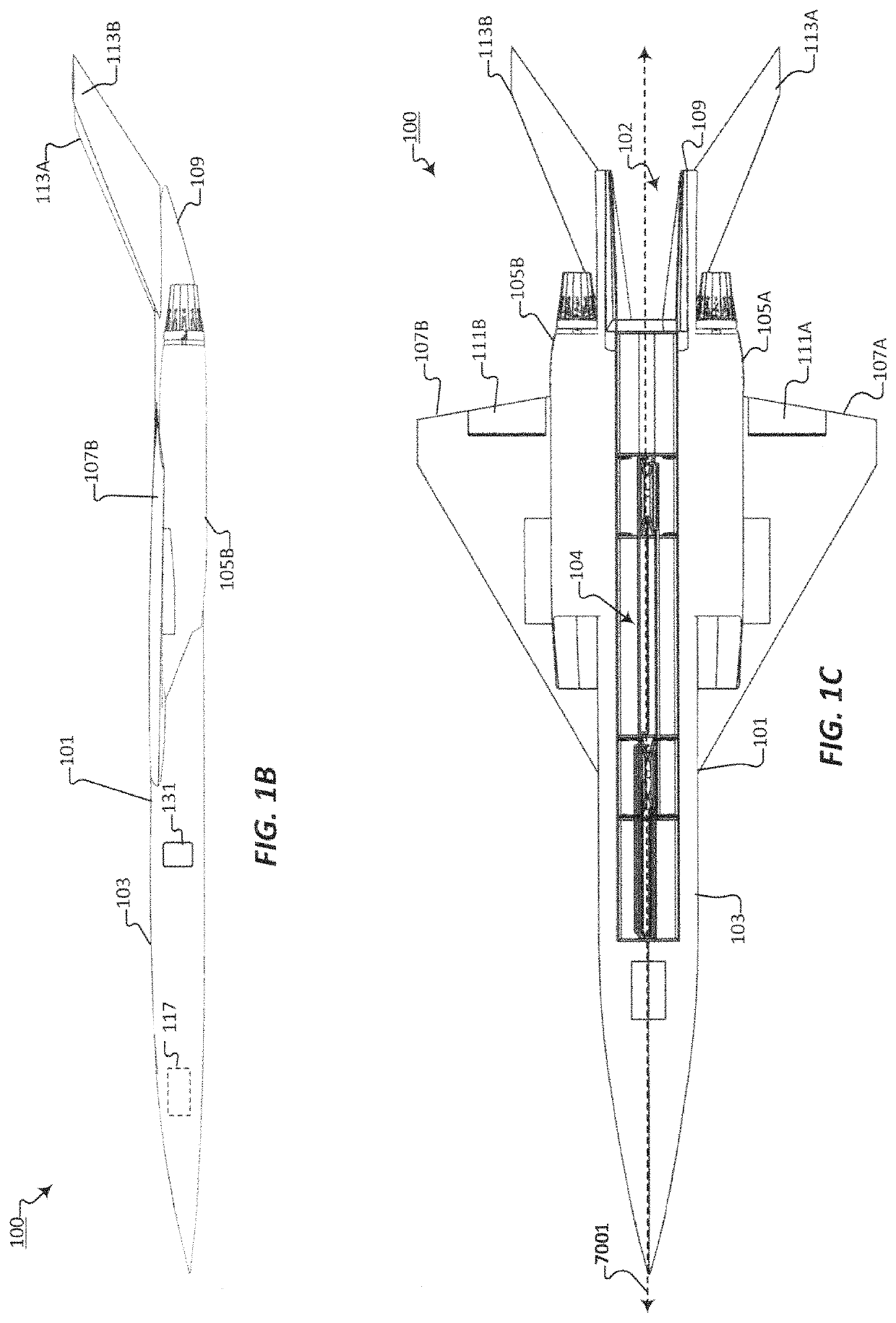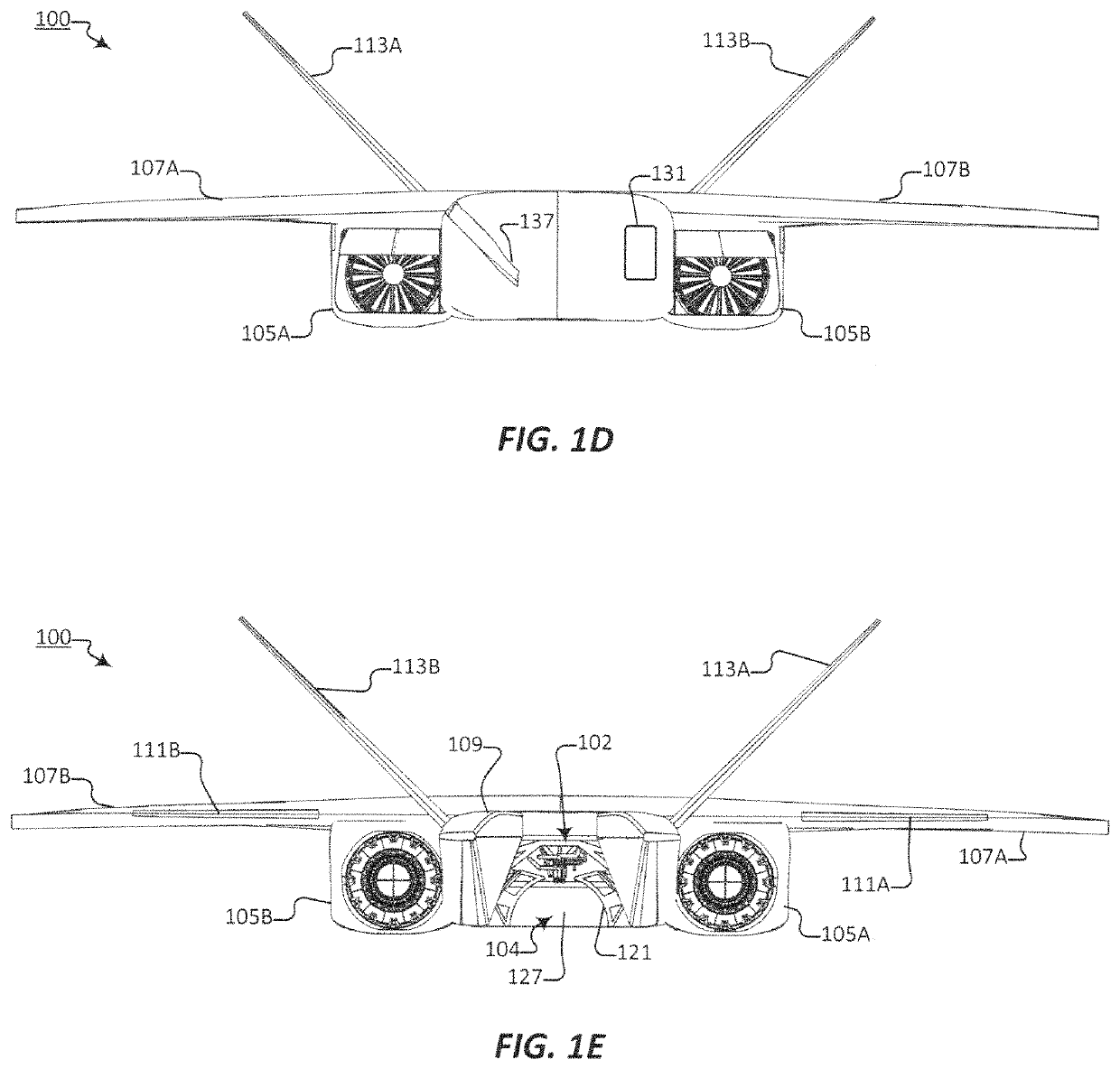Adaptive autonomous aircraft system with modular payload systems
a payload system and autonomous technology, applied in the field of autonomous aircraft systems with modular payload adaptations, can solve the problems of inability to meet the transition, inability to meet the needs of launch services industry, and inability to meet the needs of launch services, etc., to achieve the effect of high frequency, reliability, flexibility and low cos
- Summary
- Abstract
- Description
- Claims
- Application Information
AI Technical Summary
Benefits of technology
Problems solved by technology
Method used
Image
Examples
Embodiment Construction
[0038]The various embodiments of the system are described below, and their advantages are best understood by referring to FIGS. 1A through 10 of the drawings. The elements of the drawings are not necessarily to scale, emphasis instead being placed upon clearly illustrating the novel features and principles of operation. Throughout the drawings, like numerals are used for like and corresponding parts of the various drawings.
[0039]Furthermore, reference in the specification to “an embodiment,”“one embodiment,”“various embodiments,” or any variant thereof means that a particular feature or aspect described in conjunction with the particular embodiment is included in at least one embodiment. Thus, the appearance of the phrases “in one embodiment,”“in another embodiment,” or variations thereof in various places throughout the specification are not necessarily all referring to its respective embodiment.
[0040]Directionally or spatially descriptive terms, such as “forward,”“rearward,”“aft,”...
PUM
 Login to View More
Login to View More Abstract
Description
Claims
Application Information
 Login to View More
Login to View More - R&D
- Intellectual Property
- Life Sciences
- Materials
- Tech Scout
- Unparalleled Data Quality
- Higher Quality Content
- 60% Fewer Hallucinations
Browse by: Latest US Patents, China's latest patents, Technical Efficacy Thesaurus, Application Domain, Technology Topic, Popular Technical Reports.
© 2025 PatSnap. All rights reserved.Legal|Privacy policy|Modern Slavery Act Transparency Statement|Sitemap|About US| Contact US: help@patsnap.com



